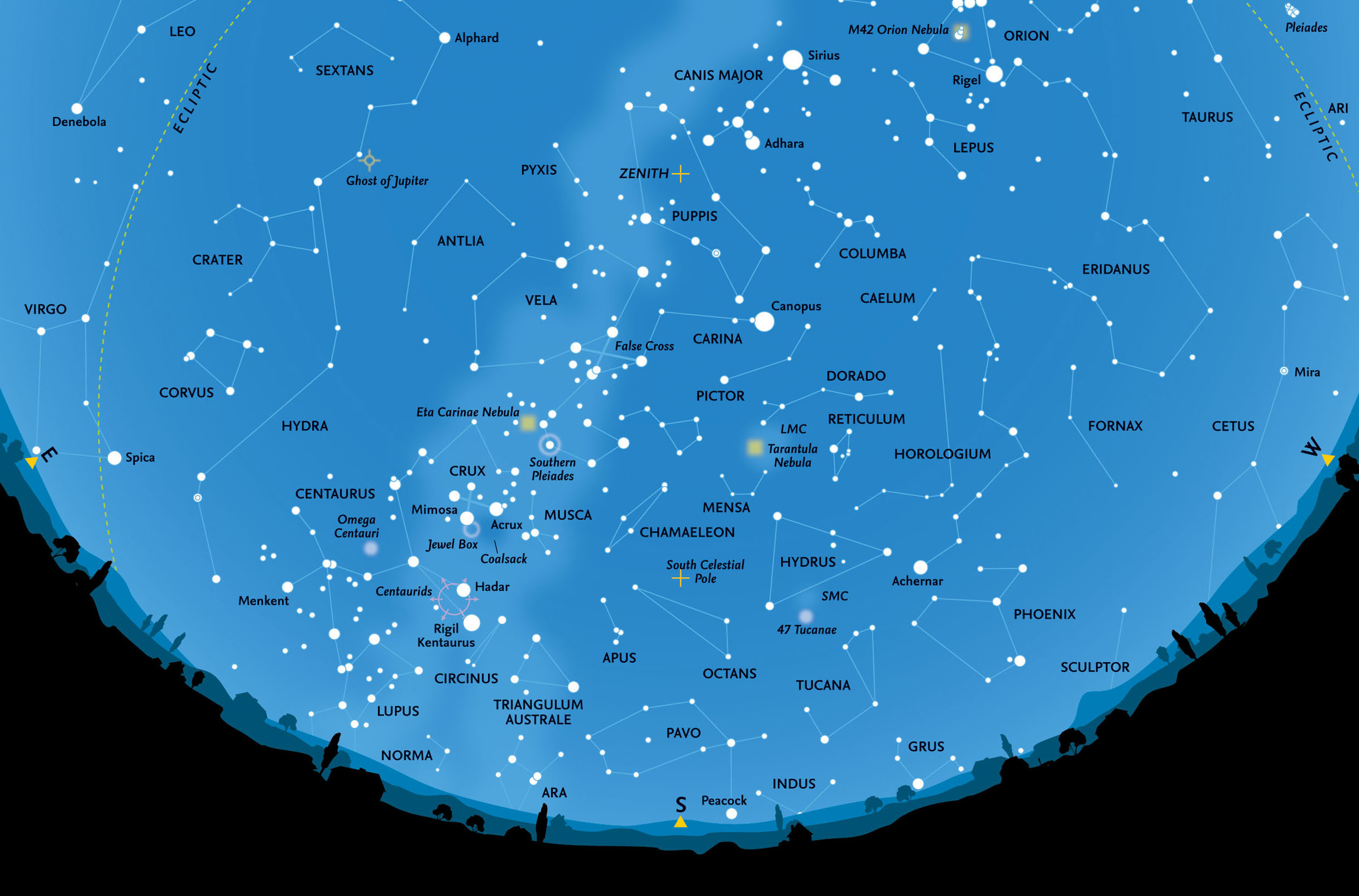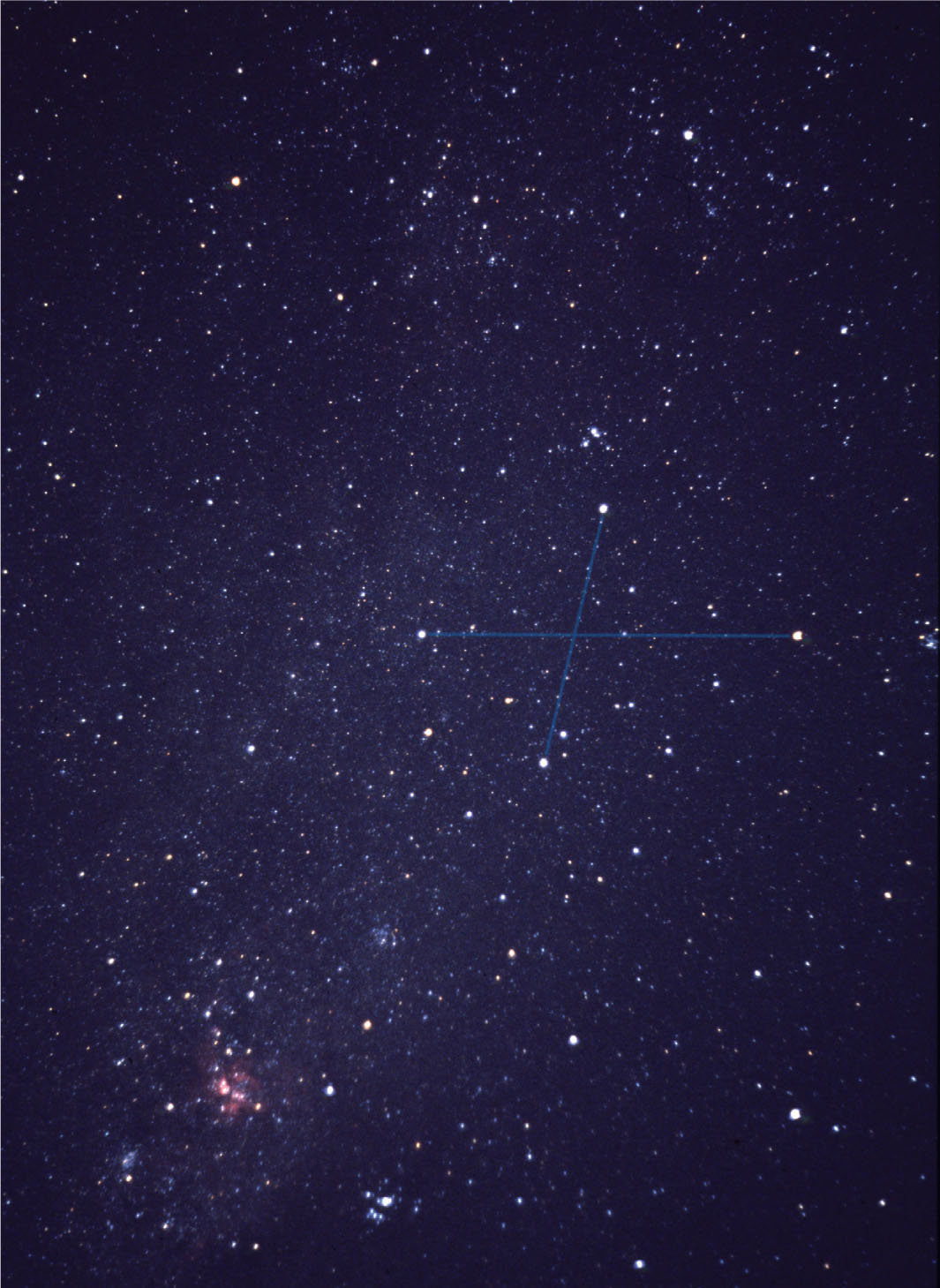
February – Looking South
February 01 |
11 p.m. |
(12 p.m. DST) |
February 15 |
10 p.m. |
(11 p.m. DST) |
March 01 |
9 p.m. |
(10 p.m. DST) |
The whole of Centaurus is now clear of the horizon in the south-east, where, below it, the constellation of Lupus is beginning to be visible. Triangulum Australe is now higher in the sky and easier to see. Both Crux and the False Cross are also higher and more visible. The Large Magellanic Cloud (LMC) and brilliant Canopus are now almost due south, with the constellation of Puppis at the zenith. Both Hydrus and the Small Magellanic Cloud (SMC) are lower in the sky, as is Phoenix, which is much closer to the horizon in the west. Next to it, the constellation of Tucana is also lower, although the globular cluster 47 Tucanae remains readily visible as does Achernar (α Eridani). The constellation of Grus and bright Fomalhaut (α Piscis Austrini) have disappeared below the horizon. Peacock (α Pavonis) is skimming the horizon in the south and is not easily seen at any time in the night.
Meteors
The Centaurid shower (which actually consists of two separate streams (the Alpha and Beta Centaurids), with both radiants lying near α and β Centauri), continues in February, reaching a low maximum (around 5 meteors per hour) on February 8, when the Moon is one day before Full Moon, so conditions are particularly unfavourable. Another weak shower, the Gamma Normids, begins to be active in late February (February 24), but the meteors are difficult to differentiate from sporadics. It reaches its weak (but sharp) maximum in March.

Parts of Carina and Vela. The ‘False Cross’ is indicated with blue lines. The red blurry spot near the bottom left corner is the Eta (η) Carinae Nebula. To the right, and a little lower, is an open cluster that surrounds Theta (ϑ) Carinae. This cluster (IC 2602) is also known as the Southern Pleiades.